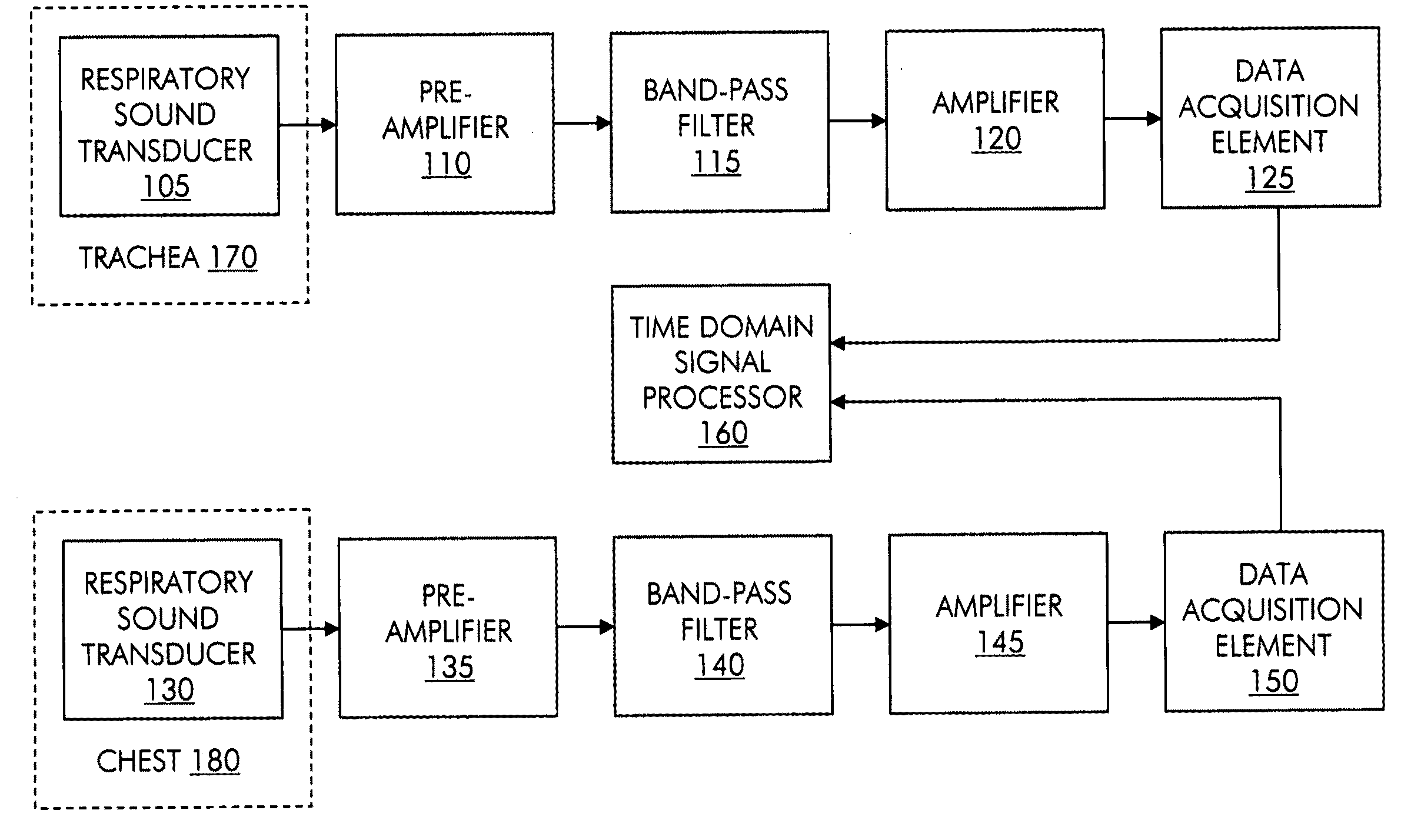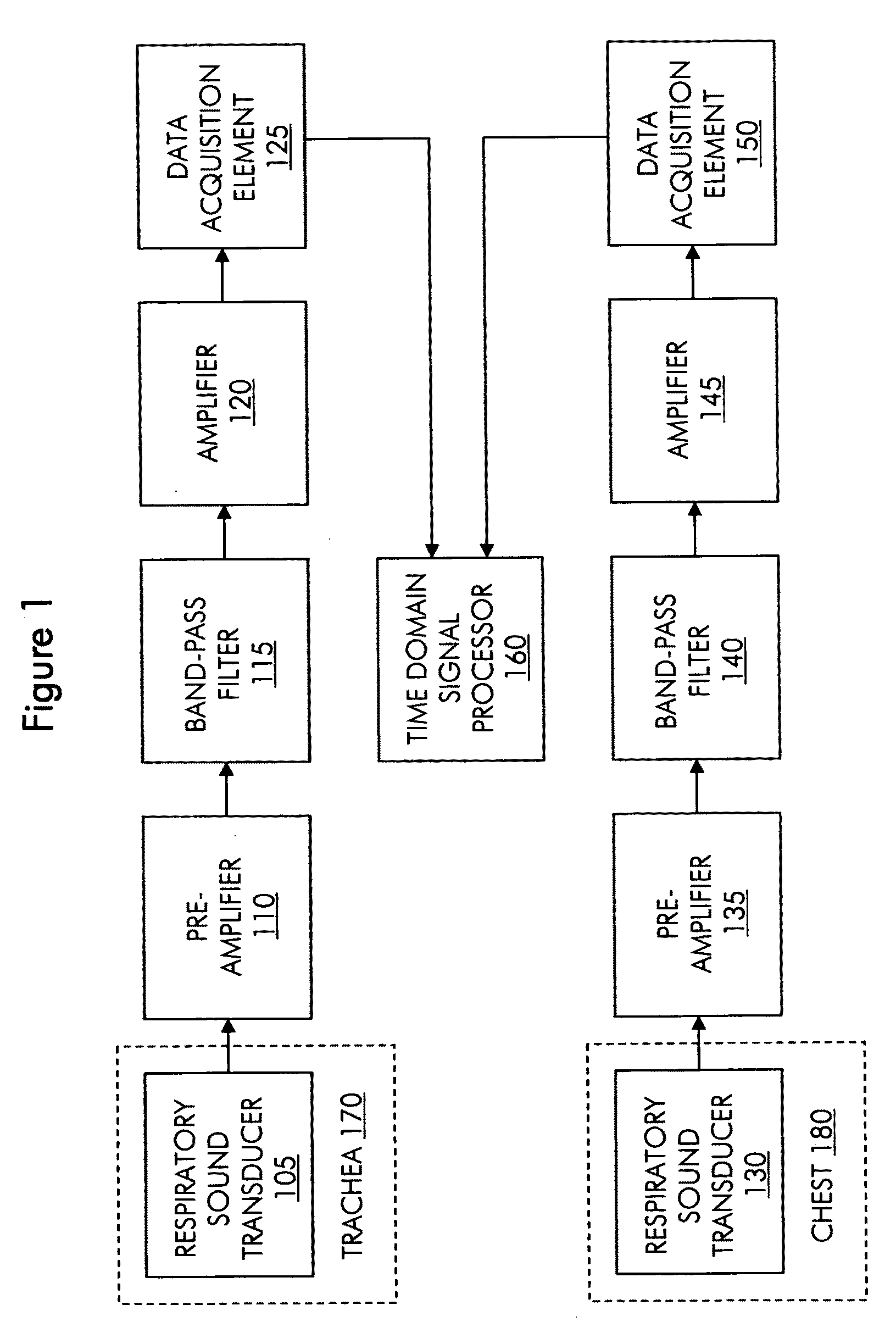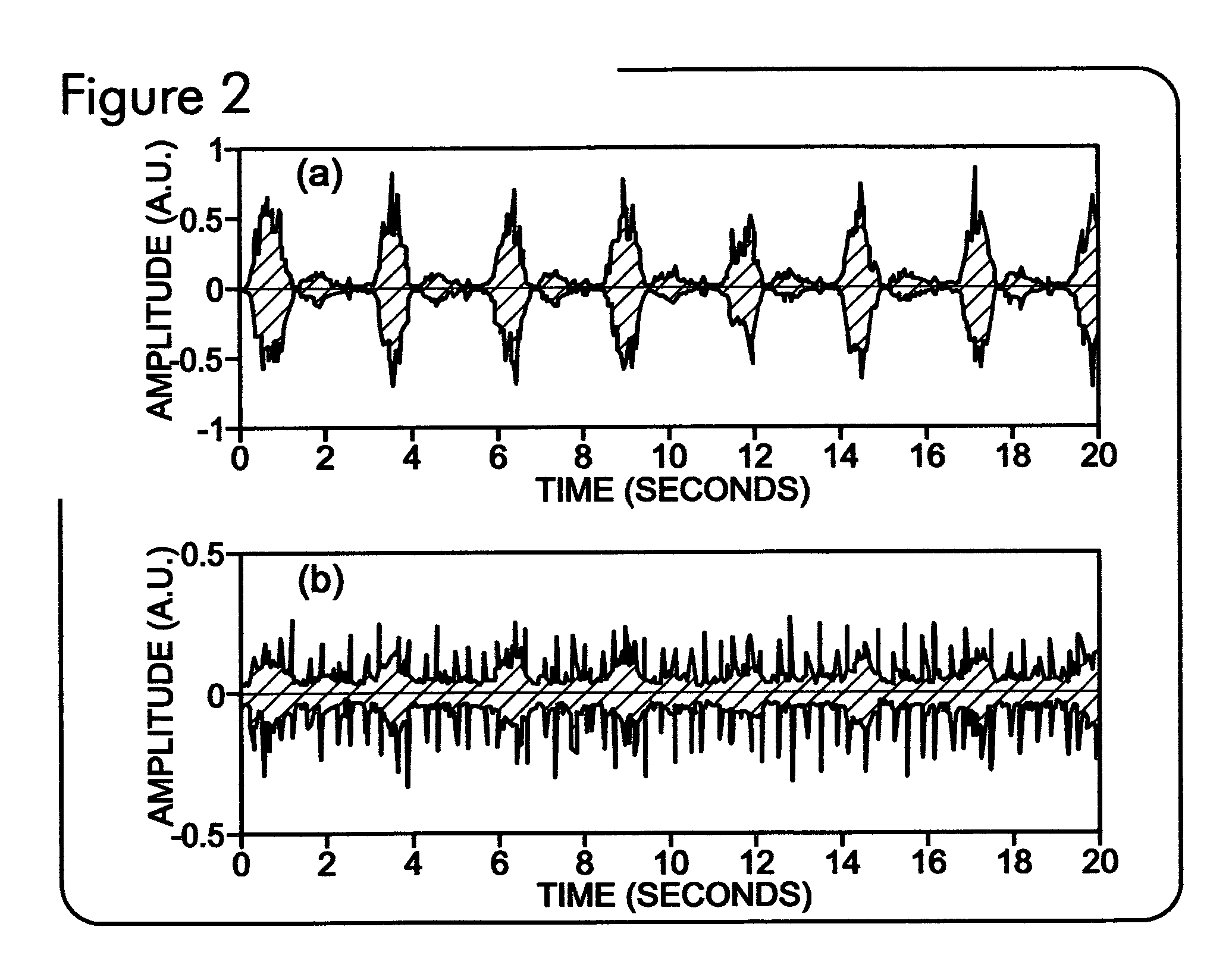Respiratory signal detection and time domain signal processing method and system
a signal processing and respiratory phase technology, applied in the field of respiratory health, can solve the problems of inconvenient and episodic methods, and require quantitative calibration, and achieve the effects of convenient determination of respiratory time data, accurate identification, and accurate demarcation of respiratory phase starting points
- Summary
- Abstract
- Description
- Claims
- Application Information
AI Technical Summary
Benefits of technology
Problems solved by technology
Method used
Image
Examples
Embodiment Construction
[0037]FIG. 1 shows a respiratory signal detection system in which the invention is operative in some embodiments. The system includes a first respiratory sound transducer 105 positioned at the trachea 170 of a human subject being monitored. Transducer 105 is communicatively coupled in series with a pre-amplifier 110, bond-pass filter 115, amplifier 120 and data acquisition element 125. The system also includes a second respiratory sound transducer 130 positioned at the chest 180 of the subject. Transducer 130 is communicatively coupled in series with a pre-amplifier 135, band-pass filter 140, amplifier 145 and a data acquisition element 150. Data acquisition elements 125, 150 transmit respiratory signals collected from transducers 105, 130 as modified by amplifiers 110, 120, 135, 145 and filters 115, 140 to a time domain signal processor 160. Time domain signal processor 160 may be collocated with one or more of the other elements shown in FIG. 1, may be a stand-alone element, or ma...
PUM
 Login to View More
Login to View More Abstract
Description
Claims
Application Information
 Login to View More
Login to View More - R&D
- Intellectual Property
- Life Sciences
- Materials
- Tech Scout
- Unparalleled Data Quality
- Higher Quality Content
- 60% Fewer Hallucinations
Browse by: Latest US Patents, China's latest patents, Technical Efficacy Thesaurus, Application Domain, Technology Topic, Popular Technical Reports.
© 2025 PatSnap. All rights reserved.Legal|Privacy policy|Modern Slavery Act Transparency Statement|Sitemap|About US| Contact US: help@patsnap.com



